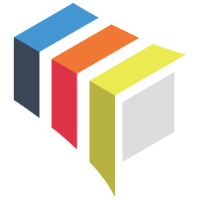QUESTIONS? CALL:
+1 (833) BOODSKAp
IoT in Remote Patient Monitoring: Revolutionizing Healthcare with Boodskap | Fiona Clarke
IoT in Remote Patient Monitoring: Revolutionizing Healthcare with Boodskap
- The healthcare industry is undergoing a significant transformation with the integration of the Internet of Things (IoT). One of the most impactful applications of IoT in healthcare is Remote Patient Monitoring (RPM). Boodskap's IoT platform plays a crucial role in enhancing patient care, improving treatment outcomes, and reducing healthcare costs through advanced RPM solutions. This blog explores the benefits, key use cases, and future trends of IoT in remote patient monitoring with Boodskap.
- IoT devices enable continuous monitoring of patients' vital signs such as heart rate, blood pressure, glucose levels, and more. Real-time data transmission allows healthcare providers to detect anomalies early and intervene promptly.
- Example: Continuous glucose monitors (CGMs) transmit real-time blood sugar levels to healthcare providers, facilitating timely interventions and personalized treatment adjustments.
- Post-surgery remote monitoring enables patients to be closely observed after discharge, reducing hospital stays and readmission rates. Wearable patches that track vital signs and wound healing progress allow healthcare providers to detect complications early.
- Example: Remote monitoring has shown significant reductions in hospital readmissions for certain conditions, leading to improved patient outcomes and reduced healthcare costs.
- IoT devices play a crucial role in managing chronic diseases like diabetes, hypertension, and heart disease. Continuous monitoring and real-time data help in timely interventions and personalized care plans.
- Example: Continuous glucose monitors for diabetics provide real-time blood sugar readings, helping patients and doctors make informed decisions about insulin dosing and lifestyle changes.
- Smart pill dispensers and IoT-enabled medication reminders ensure patients take their medications correctly and on time. These devices send alerts to patients and caregivers when doses are missed, improving treatment efficacy.
- Example: IoT-based medication reminders can improve adherence rates by up to 30%, potentially leading to better health outcomes and reduced complications from chronic conditions.
- IoT-enabled glucose monitors provide real-time blood sugar readings without the need for finger pricks. This continuous monitoring helps diabetics manage their condition more effectively and make informed decisions about their treatment.
- Benefits: Improved glycemic control, reduced risk of complications, personalized care.
- Smart ECG monitors and wearable heart rate sensors track heart rhythms and transmit data to cardiologists in real-time. Any abnormal patterns trigger immediate alerts, allowing for rapid medical intervention.
- Benefits: Early detection of cardiac issues, timely treatment, improved patient outcomes.
- Wearable patches and smart bandages monitor vital signs and wound healing progress after surgery. This continuous observation reduces the need for extended hospital stays and helps in early detection of complications.
- Benefits: Reduced hospital readmissions, faster recovery, enhanced patient care.
- IoT-enabled fall detection sensors provide a safety net for elderly patients living independently. These sensors automatically alert emergency services or caregivers if a fall occurs, ensuring immediate assistance.
- Benefits: Enhanced safety for elderly patients, timely medical intervention, peace of mind for caregivers
- Smartwatches and mental health apps track physiological signs such as heart rate and sleep patterns to detect early signs of mental health disorders. Data collected is analyzed to provide timely interventions and personalized therapy adjustments.
- Benefits: Early intervention in mental health disorders, improved mental health outcomes, personalized care.
- Integration with Artificial Intelligence (AI): Combining AI with IoT will enable more advanced data analytics, predictive insights, and automated decision-making, further enhancing patient care and operational efficiency.
- Adoption of 5G Technology: The rollout of 5G networks will provide faster and more reliable connectivity for IoT devices, enabling real-time data transmission and more efficient remote monitoring services.
- Enhanced Data Security: As the amount of health data collected by IoT devices increases, ensuring data security and privacy will become even more critical. Future IoT systems will incorporate advanced encryption and security protocols to protect patient data.
- Expansion of Telehealth Services: IoT will play a significant role in expanding telehealth services, providing more comprehensive remote care options and improving accessibility for patients in remote or underserved areas.
- Boodskap's IoT platform is at the forefront of revolutionizing healthcare through remote patient monitoring. By providing real-time data, improving patient monitoring, enhancing treatment outcomes, and reducing operational costs, IoT is transforming the healthcare industry. As IoT technologies continue to evolve, they will play an increasingly vital role in delivering efficient, effective, and personalized healthcare services. Embracing IoT in remote patient monitoring is essential for healthcare providers aiming to improve patient care, streamline operations, and stay ahead in the rapidly changing healthcare landscape.

